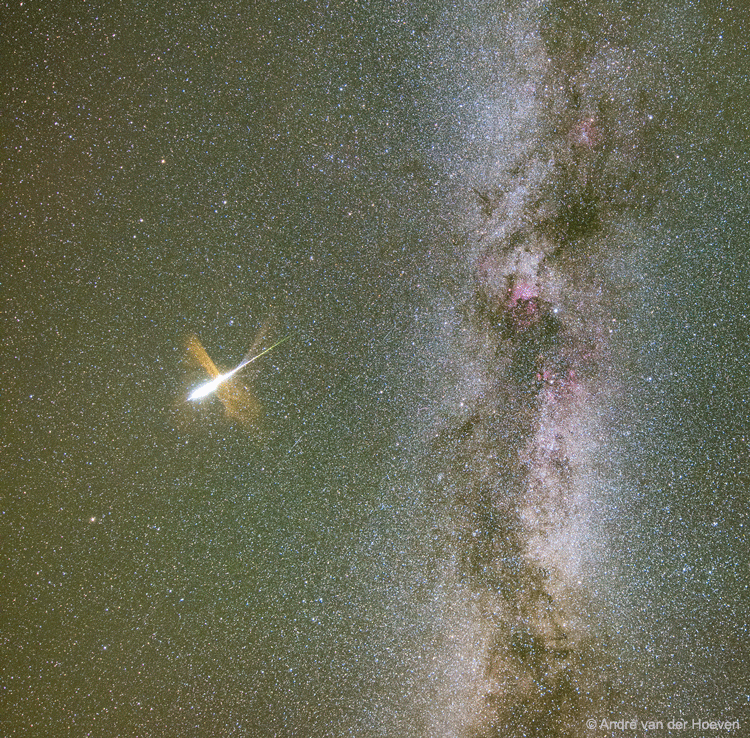
|
Credit & Copyright: Andre van der Hoeven
Explanation:
In about a week the
Perseid Meteor Shower will reach its maximum.
Grains of icy rock will
streak across the sky
as they evaporate during entry into
Earth's atmosphere.
These grains were shed from
Comet Swift-Tuttle.
The Perseids
result from the annual crossing of the Earth through
Comet Swift-Tuttle's orbit, and are
typically the most active
meteor shower of the year.
Although it is hard to predict the level of activity in
any meteor shower, in a clear dark sky an observer might see a
meteor a minute.
This year's
Perseids
peak just a few days after
full moon,
and so some faint meteors will be lost to the
lunar skyglow.
Meteor showers in general are best seen from a relaxing position, away from lights.
Featured here
is a meteor caught
exploding during the 2015
Perseids above
Austria
next to the central band of our
Milky Way Galaxy.
|
January February March April May June July August September October November December |
| ||||||||||||||||||||||||||||||||||||||||||||||||
NASA Web Site Statements, Warnings, and Disclaimers
NASA Official: Jay Norris. Specific rights apply.
A service of: LHEA at NASA / GSFC
& Michigan Tech. U.
Based on Astronomy Picture
Of the Day
Publications with keywords: Perseids
Publications with words: Perseids
See also:
